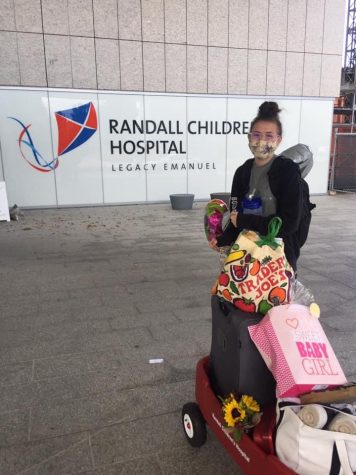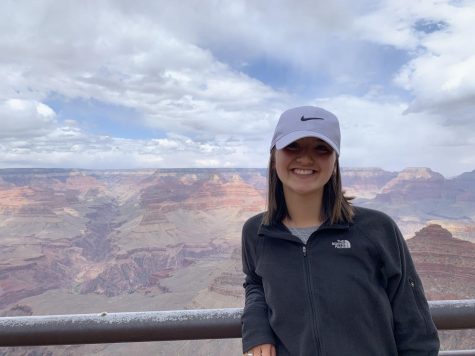Returning to training requires body awareness, patience
November 20, 2020
A TuHS athlete was diagnosed with a rare muscle condition this fall that received press attention when three University of Oregon football players suffered the same diagnosis in 2017. Rhabdomyolysis (rhabdo) is a condition where muscles break down very quickly and release various intracellular muscle components into the bloodstream, potentially resulting in kidney damage. Two examples of those enzymes are myoglobin and creatine kinase (CK).
“When you work out you do small amounts of muscle damage and that’s fine, that’s what makes you stronger. Your body repairs it and that’s when hypertrophy occurs,” Michael M. Joyner said in an interview with Sports Illustrated.
When a workout is intense and your muscles are overworked, they break down and myoglobin is released.
Although some soreness from a workout is to be expected, sophomore Isabella Kneeshaw quickly realized that her muscle discomfort was far from ordinary.

“I found out that I had Rhabdomyolysis by Googling ‘swollen arms after a workout’ and coming across an article that was titled ‘The Pull-Up Workout That Almost Killed Me.’ After reading the article I realized that I had almost all the symptoms that this person had. My swollen arms wouldn’t straighten (I looked like a T-Rex), and I started to notice that I had dark-colored urine,” Kneeshaw said.
Inexperienced and returning athletes must use caution when they exercise. An exercise that often relates to rhabdo cases is eccentric training: a slow, downward movement that focuses on lengthening the muscle instead of contracting it. Along with workouts, dehydration plays a role in rhabdo cases as it decreases blood flow to the kidneys and makes it harder to flush out myoglobin.
Symptoms are unique to the patient, but most experience muscle fatigue, swelling and soreness. They can also happen all throughout the body or in a specific area, and discolored urine also indicates a damaged kidney.
Early diagnosis of rhabdo is key to a successful recovery. Being aware of your body and its recovery process is crucial if you are to catch rhabdo early on. Treatment for rhabdo includes hospitalization to flush out the toxic levels of myoglobin in the bloodstream. This is achieved by constant fluids through intravenous fluid (IV) and drinking water in order to maintain urine production and prevent kidney failure.
“The most surprising part of my experience in the Emergency Room was when they did labs and couldn’t even get an accurate number for my CK levels because the test only read numbers up to 60,000 and my levels were at 110,762 the day I was admitted. For reference, normal CK levels are between 40-100. The even crazier thing is that this is normal for patients with rhabdo, and numbers can range much higher than mine,” Kneeshaw stated.
So, athletes, do your muscles and kidneys a favor by exercising with caution. Ease back into your workout routine and give yourself some grace for feeling out of shape or out of practice. You haven’t lost your skills; they are just waiting to resurface with some encouragement and regular training. While it’s important to listen to your body and be able to tell when something is wrong, remember that rhabdo is rare, so there’s no need to end a workout when you feel a little sore.



Jr Sato • Nov 22, 2020 at 5:37 AM
Wow! Just found out that our grand daughter Lily Bennett is doing some writing for Tualatin High School and we are so happy and proud. Watched many athletic events that our grand children participated in and this another positive experience for Lily!
Congrats Lily, ♥️ U!!!!!!!